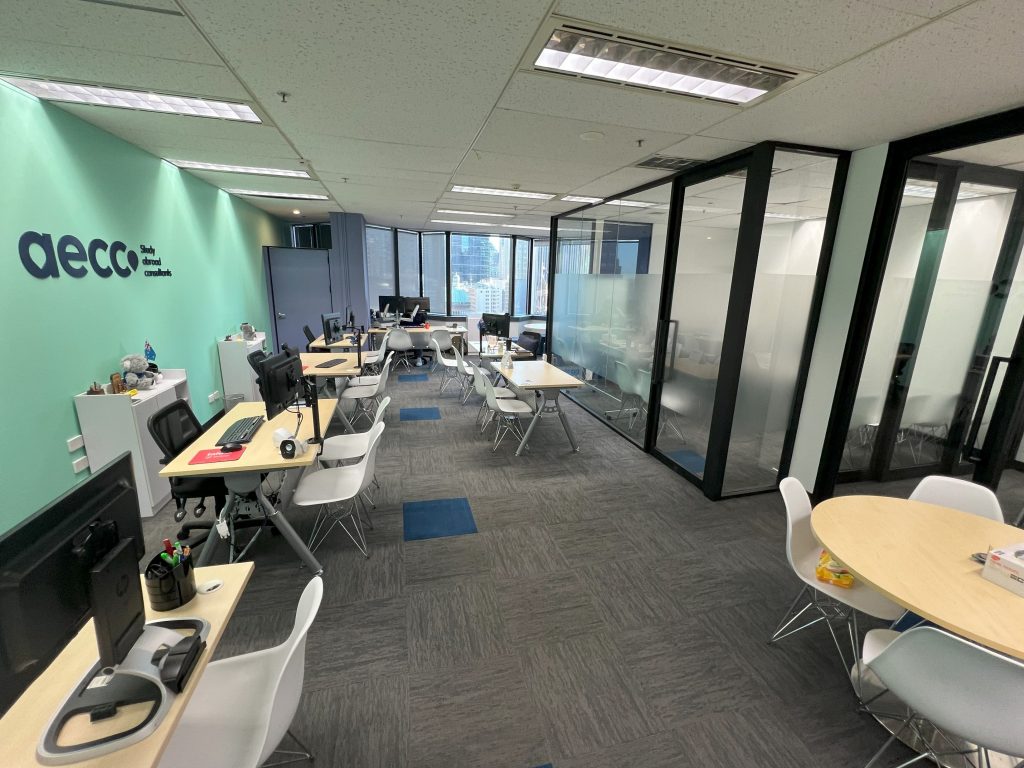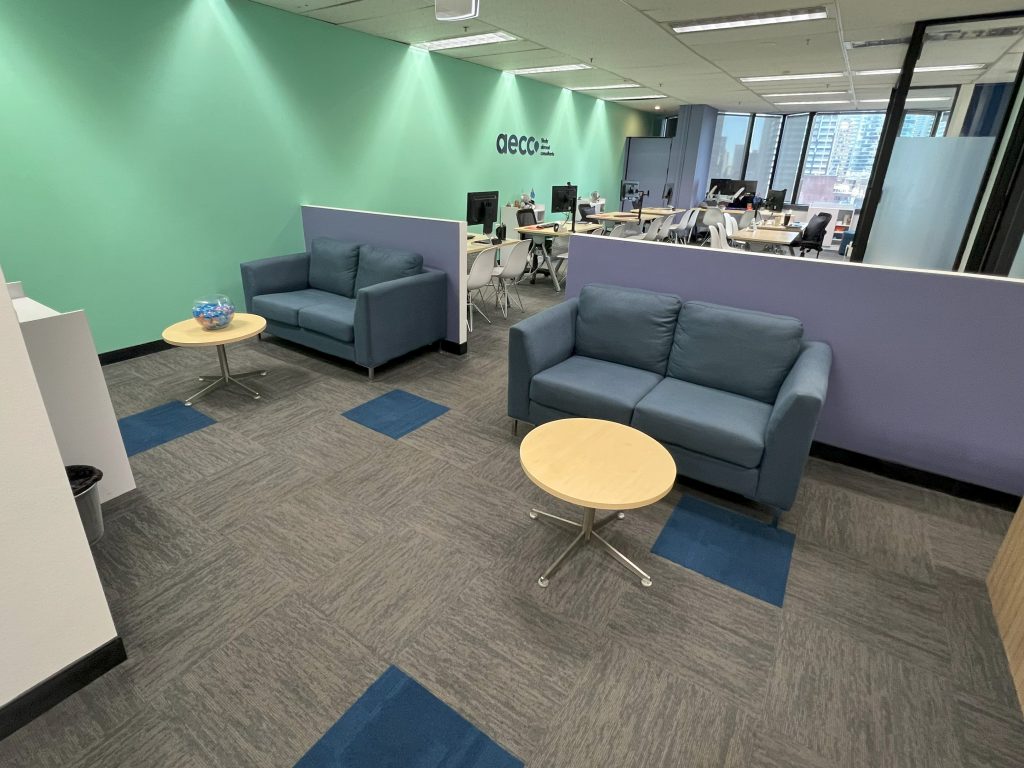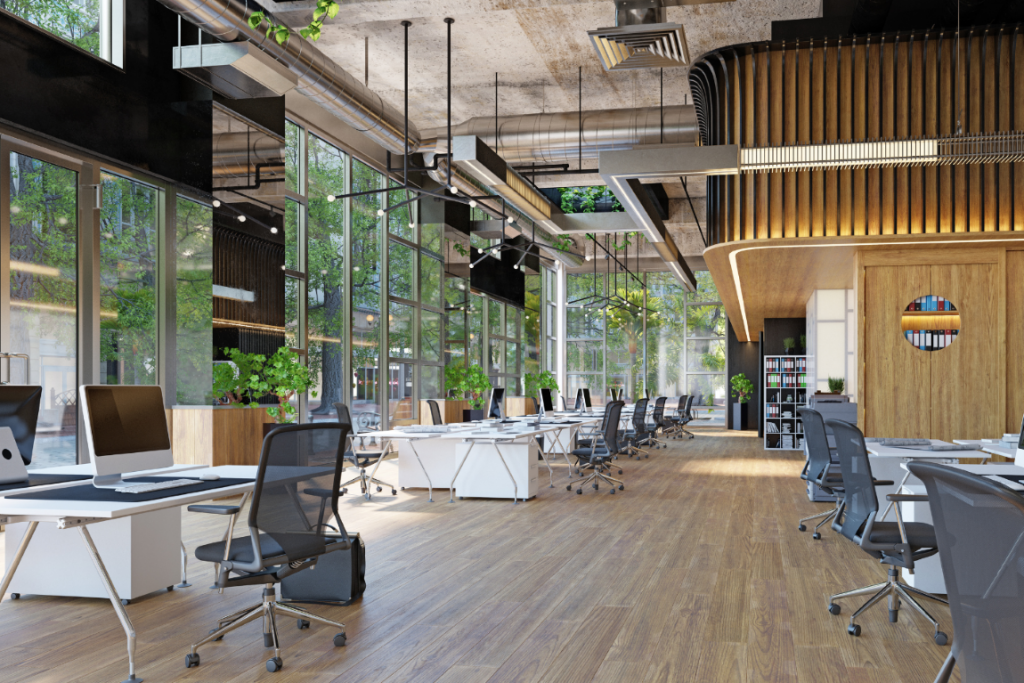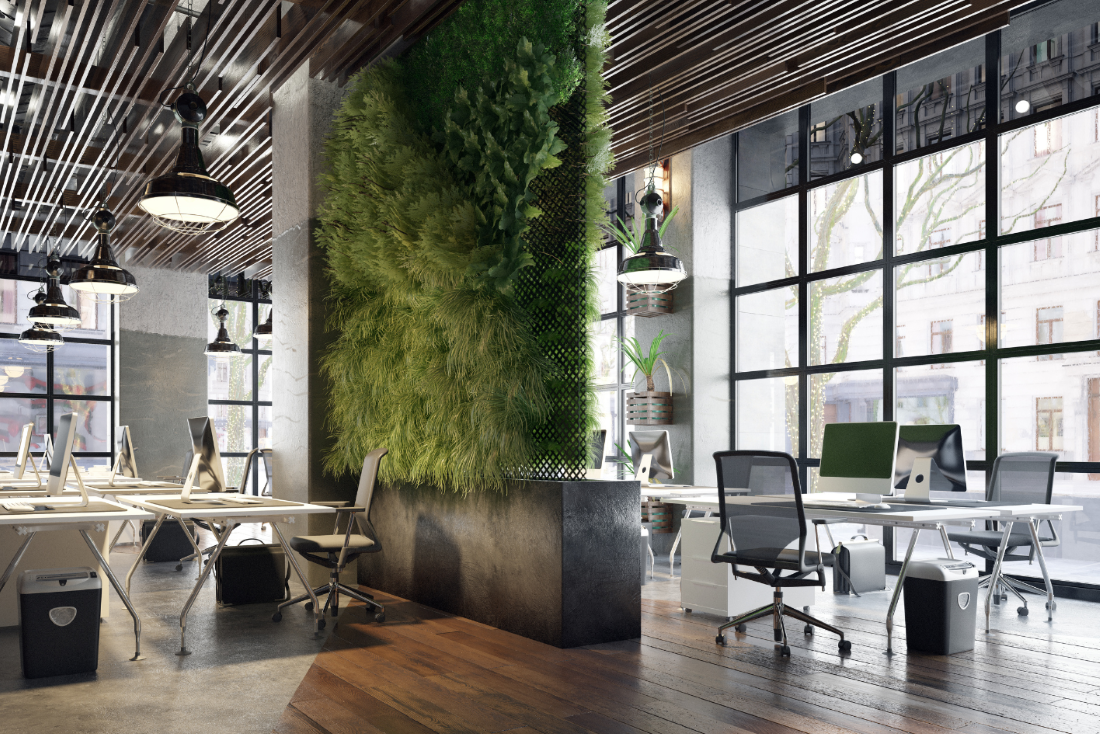Does your office space support your health and well-being and that of your employees?
Most of us spend one-third of the day (on workdays) in the office or other type of workplace. This represents a significant portion of our lives over our working years.
The physical space one works in is as important to staff well-being as the culture of the company. It’s very important to create an appealing work environment that places a focus on boosting and maintaining the health – both physical and mental – of employees.
This also ultimately transmits, in numerous ways, to clients, customers, and other consumers.


The Health Impact of the Office Environment
Among the things the COVID-19 pandemic revealed are the connection between physical and mental health and the importance of human connection. These extend to workplaces – and we now have a much better understanding of how the office can foster better mental health and physical well-being.
Surveys have demonstrated that:
- At least 60% of people currently have difficulty concentrating in their working environment.
- The vast majority of workers would like healthier workplaces – from ergonomic seating to fitness benefits, healthier lunch options, and even staff wellness spaces.
- Stress in the workplace negatively impacts the mental health of up to 90% of employees – and this may well contribute to the reluctance of so many to now return to offices rather than continue working from home.
- Collaborating in-office is essential for businesses in terms of building company culture, integrating new staff, nurturing relationships, and fostering creativity and a team ethos.
The physical work environment plays a direct, essential role in employee health and well-being – and this has a roll-on impact on productivity and business outcomes.
With a focus on the achievement of public health goals in workplaces, offices and similar must create their physical space with health and well-being in mind – and this means considering aspects such as layout, natural elements, light, colour, and ergonomics to motivate and support creative thinking and encourage productivity.

Things to Consider
- Natural Elements – natural and tactile materials like timber, engineered wood, brick, cork, and natural fibres are calming and, when incorporated into a fresh, airy, well-ventilated space that also includes a water feature, plenty of natural light, and/or greenery (e.g. a living green wall, potted plants, or even wall art/photographs), can be soothing and improve the mood and inspiration of staff.
- Colour – colour influences mood and motivation. From fresh, crisp white to calming blue hues to stress-relieving greens; energising reds to joyful, friendly yellows; sophisticated navy to dramatic black to rustic, comforting browns – the way you use your space should inform your use of colour.
- Light blue promotes tranquillity, patience, trust, and a sense of calm.
- Green promotes stability, growth, healing, and balance.
- Yellow is associated with creativity, confidence, and positivity.
- Orange represents confidence, sociability, and success.
- Red is energising and exciting.
- White is clean and represents simplicity and honesty.
- Black is formal, sophisticated, dramatic, and secure.
- Purple represents luxury, ambition, royalty, and spirituality.
- Pink is the colour of compassion and sincerity.
- Lighting – lighting is also important and what is possible here will depend on your premises. From large windows (transparent if your outlook is pleasant; translucent windows can be a good option if not) to skylights, to the appropriate use of non-natural lighting: the way you light your space and its intensity can make an enormous difference to mood and health. (Consider, for example, that for some people, fluorescent lighting can cause eye strain or trigger headaches, migraines, light-headedness, and anxiety attacks).
- Stress Minimisation – open-plan offices, comfortable seating areas, and collaborative desk areas are important, but this does not negate the need for autonomous working zones – so include office partitions and private rooms so that staff can work quietly and concentrate when necessary.
- Reduce Clutter – cluttered homes are proven to create stress and an inability to focus. This applies to workplaces as well. Provide plenty of hidden storage space (closed cabinets, etc) and encourage a clean, fresh, tidy workplace.
- Breakout Spaces – are important for employee satisfaction and mental well-being. They are also important for minimising noise.
- Ergonomics – from comfortable community sofa-style seating in breakout spaces to supportive chairs, sit-stand or height-adjustable desks, and comfortably designed workstations, maximising the physical well-being of your staff is also important. Encourage staff to move around, stretch, and make better health choices. One easy way to do this is to provide a staff water station.

Need an Office Update?
Could your office better serve the needs of you and your staff?
To attract and retain staff, modern companies must foster environments that empower and motivate employees to naturally think, work, and collaborate.
CMLS Commercial Interiors is an expert professional Sydney office fit-out company working throughout the Greater Sydney region, from the CBD to Parramatta and Penrith.
From complete office make good to fit-outs, office partitioning, office interior design, and anything else you need, we are your superior choice! No project is too large or too small – so CONTACT US NOW to discuss your project. We can inspire you and bring your vision to life.

